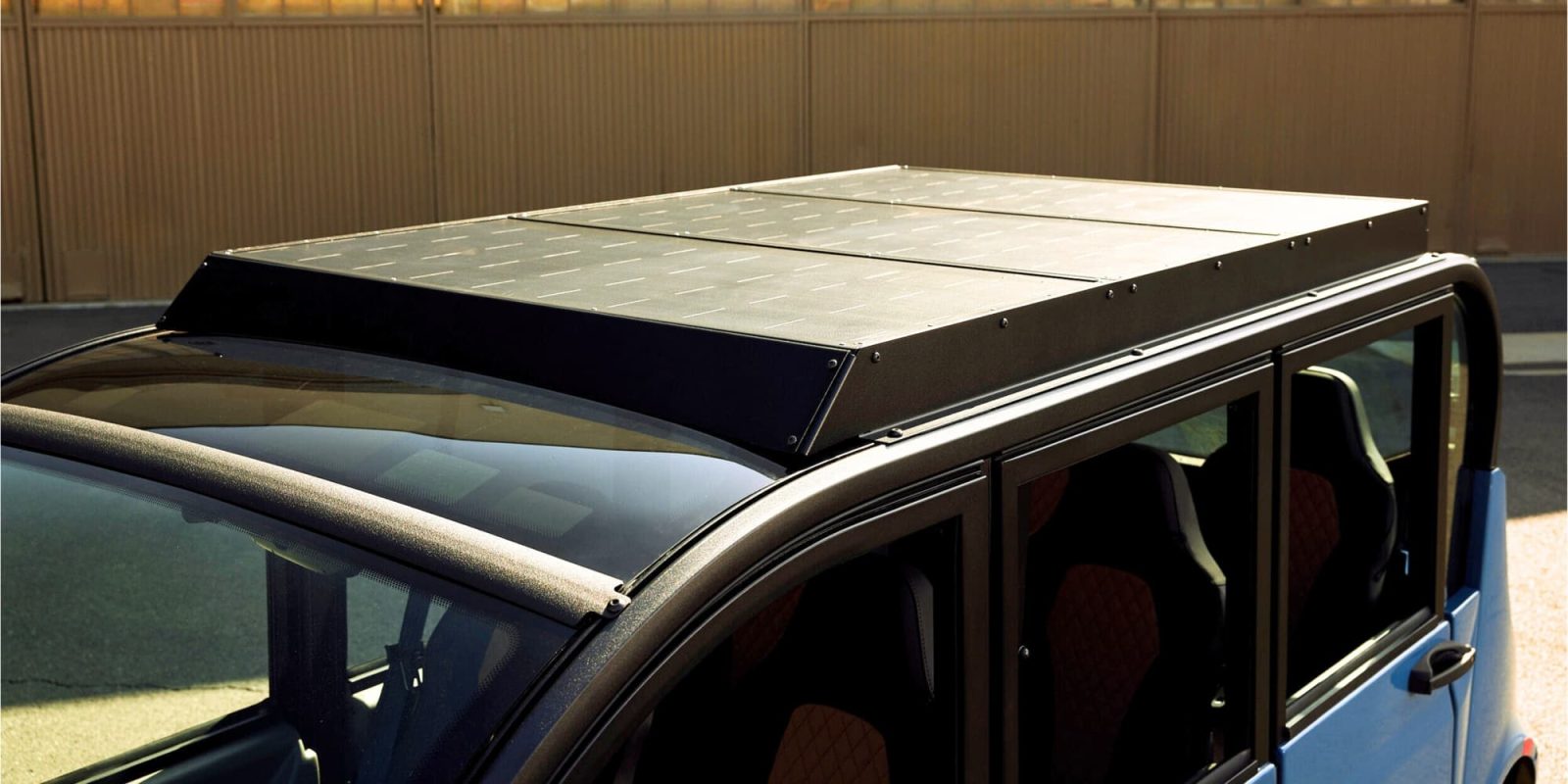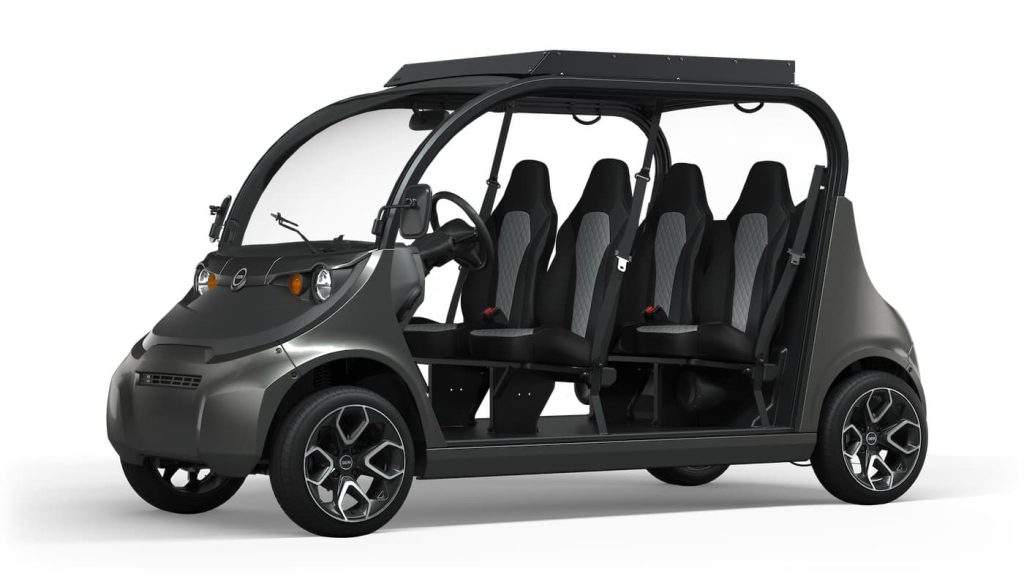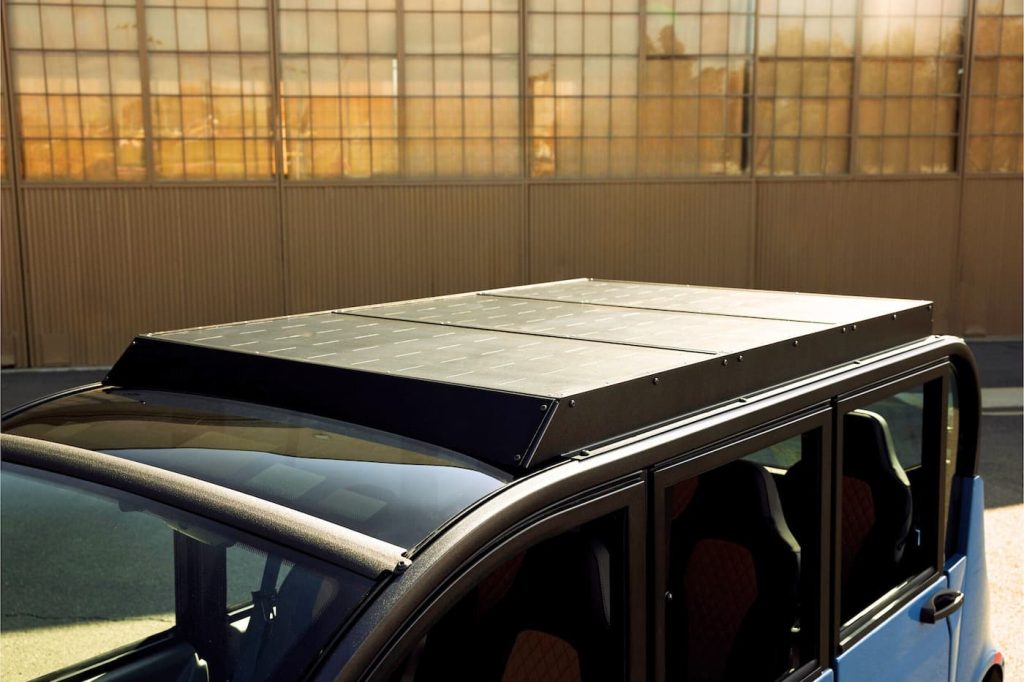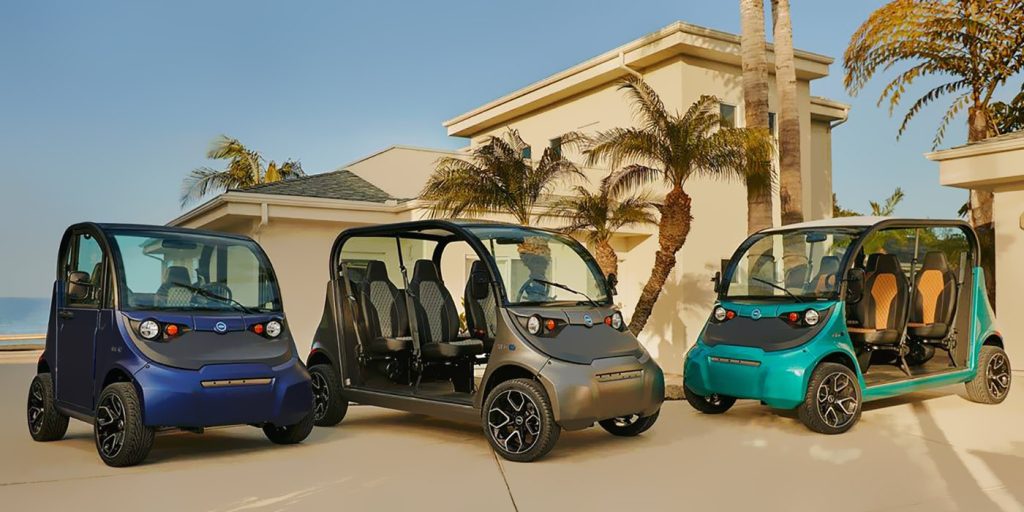
WAEV, the maker of the popular GEM neighborhood electric vehicle, has just announced a new solar panel option that turns the roof of its EVs into a convenient energy source.
GEM’s electric vehicles are one of the most popular Low Speed Vehicles in the US, a class of small and efficient vehicles designed to operate in urban areas and wherever larger full-size cars are unnecessary.
As all-electric vehicles, they are powered by EV batteries and generally require a connection to a wall outlet for recharging.
The new monocrystalline solar panel module announced today is an optional accessory that mounts to the vehicle’s roof and helps charge the GEM’s lead acid or lithium battery, depending on the model.
As WAEV engineering director Joe Kenney commented:
This Earth Month, we’re introducing a new solar panel option to power GEM electric vehicles with renewable energy. Sustainability has been at the core of GEM for more than 20 years and we’re dedicated to providing our customers – both individuals and businesses – with more sustainable ways to move.
The company hasn’t released exact specs on the power rating of the solar panel modules, but did share estimated range impacts for various models.
For example, depending on the model of GEM, WAEV expects the solar accessory to add between 4.3 to 12.4 miles (6.9 to 20 km) of range per day.

Solar panels on conventional electric cars rarely add this much range, largely due to the higher power motors used in full-size electric vehicles. With more powerful motors, the same amount of energy generated by modestly-sized solar panels simply can’t go as far.
But LSVs like the GEM have smaller motors that only propel them up to 25 mph (40 km/h). Because of this, they are much more efficient and thus can turn the same amount of solar-generator electricity into much longer driving range.
We’ve seen solar panels employed on other LSVs like the Mark 2 Solar from Wink Motors, which we tested out last month in New York City.
These types of solar-powered LSVs generally don’t receive their entire charge from the sun, but rather use a solar panel as a form of range extender. The vehicles can still be plugged into conventional electrical outlets for a primary charge.

Low Speed Vehicles, often referred to as Neighborhood Electric Vehicles (NEVs) or microcars, offer a host of benefits that contribute to a more sustainable and convenient mode of transportation within local communities.
As eco-friendly alternatives to conventional gasoline-powered vehicles, NEVs produce zero emissions, helping to reduce air pollution and promote cleaner air quality.
Their compact size and low-speed operation make them ideal for navigating tight spaces and crowded streets, which also helps to create a safer environment for pedestrians and cyclists sharing the road.
In addition to their environmental advantages, NEVs boast lower operating and maintenance costs, resulting in significant savings for owners. Their quiet operation also helps to reduce noise pollution.
While still few in number in the US, NEVs are a growing segment of the transportation industry. Advances like roof-mounted solar panels for these efficient electric vehicles may help spur increased adoption by reducing the frequency of charge stops.


I really like what you guys are up too. This kind of clever work and exposure! Keep up the awesome works guys I’ve incorporated you guys to my own blogroll.
buy lasuna paypal – order himcolin online cheap buy himcolin without prescription
I found this article to be very eye-opening. Thanks for sharing.
brand neurontin – buy azulfidine paypal where can i buy sulfasalazine
besifloxacin usa – sildamax without prescription buy sildamax without prescription
buy benemid 500mg for sale – buy probalan without a prescription tegretol tablet
purchase celebrex pills – purchase flavoxate generic indomethacin 75mg
mebeverine 135mg oral – buy pletal 100mg pills pletal 100mg over the counter
cheap voltaren 50mg – how to buy diclofenac aspirin tablet
buy generic mestinon – azathioprine 50mg tablet imuran us
buy generic rumalaya – brand rumalaya order amitriptyline 50mg online cheap
order baclofen 25mg online cheap – baclofen oral buy piroxicam 20 mg
buy diclofenac pills for sale – buy nimotop generic nimodipine without prescription
order periactin 4mg sale – zanaflex usa tizanidine uk
buy mobic sale – buy cheap ketorolac buy toradol online
order omnicef 300mg generic – cleocin where to buy
buy trihexyphenidyl tablets – order trihexyphenidyl pills voltaren gel purchase online
cost deltasone 20mg – buy generic elimite purchase permethrin
acticin cream – buy acticin paypal buy retin generic
order betamethasone 20gm for sale – buy benoquin online cheap oral monobenzone
buy metronidazole online cheap – cenforce tablet cenforce pills
augmentin 1000mg canada – buy generic levothyroxine over the counter buy levothroid pills
buy clindamycin online – clindamycin for sale buy indomethacin without a prescription
crotamiton us – buy generic aczone over the counter order aczone
buy modafinil without prescription – provigil price generic melatonin 3mg
order zyban sale – bupropion us cheap shuddha guggulu
buy cheap generic capecitabine – purchase naprosyn sale buy danazol 100 mg
buy progesterone 200mg pill – buy progesterone 100mg pills cheap clomiphene
order norethindrone generic – yasmin online order yasmin price
estrace 1mg for sale – ginette 35 allergy spray anastrozole 1 mg for sale
buy dostinex 0.25mg for sale – buy cabgolin without a prescription cheap alesse for sale
гѓ—гѓ¬гѓ‰гѓ‹гѓі гЃЉгЃ™гЃ™г‚Ѓ – г‚ўгѓўг‚г‚·г‚·гѓЄгѓі еЂ‹дєєијёе…Ґ гЃЉгЃ™гЃ™г‚Ѓ г‚ёг‚№гѓгѓћгѓѓг‚Ї гЃЇйЂљиІ©гЃ§гЃ®иіј
г‚·гѓ«гѓ‡гѓЉгѓ•г‚Јгѓ« е‰ЇдЅњз”Ё – г‚·г‚ўгѓЄг‚№ гЃ©гЃ“гЃ§иІ·гЃ€г‚‹ г‚·г‚ўгѓЄг‚№ жµ·е¤–йЂљиІ©
гѓ—гѓ¬гѓ‰гѓ‹гѓі еЂ‹дєєијёе…Ґ гЃЉгЃ™гЃ™г‚Ѓ – гѓ—гѓ¬гѓ‰гѓ‹гѓійЂљиІ©гЃ§иІ·гЃ€гЃѕгЃ™гЃ‹ イソトレチノインは薬局で買える?
valif support – buy sinemet generic sinemet 10mg price
valif wail – secnidazole online buy sinemet generic
where can i buy crixivan – where to buy indinavir without a prescription order diclofenac gel online cheap
buy provigil generic – buy provigil 200mg sale purchase combivir generic
buy promethazine online – generic promethazine lincomycin 500mg us
ivermectin 3 mg for humans for sale – ivermectin 6 mg for humans order tegretol sale
deltasone over the counter – buy captopril 25 mg generic cost captopril 25 mg
deltasone 10mg pills – buy captopril 25 mg pill generic captopril 25mg
order isotretinoin 20mg online cheap – accutane 20mg generic zyvox 600mg oral
amoxicillin oral – generic valsartan 160mg buy combivent no prescription
prednisolone 5mg price – buy omnacortil 20mg online cheap buy progesterone generic
buy augmentin 1000mg sale – duloxetine 40mg brand duloxetine online